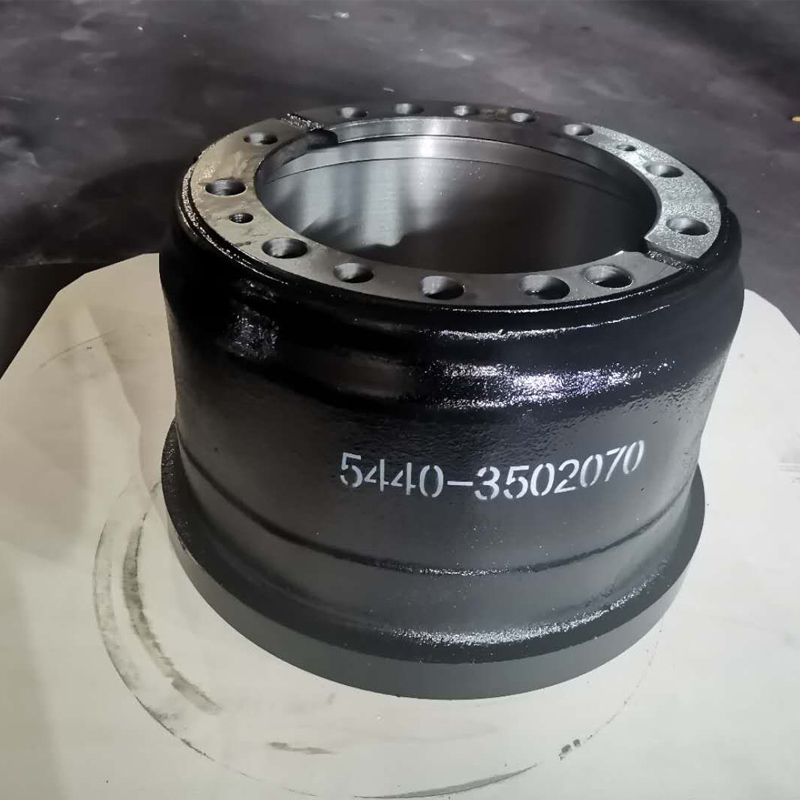dec . 11, 2024 10:14 Back to list
Optimizing Brake Drum Installation for Enhanced Vehicle Performance and Safety
Setting Up Brake Drums A Comprehensive Guide
Brake drums are critical components of a vehicle’s braking system, especially in older models and heavy-duty vehicles. Understanding how to set them up properly is essential for ensuring safety, reliability, and optimal braking performance. This article will provide a detailed overview of the steps involved in setting up brake drums and tips for maintaining them.
Understanding Brake Drums
Brake drums are hollow, cylindrical components that house the brake shoes. When the driver presses the brake pedal, brake fluid is sent to the wheel cylinders inside the drum. This action causes the brake shoes to expand outward against the inner surface of the drum, creating friction that slows the vehicle down. The efficient function of brake drums is crucial, as any malfunction can lead to decreased braking power or complete brake failure.
Tools and Materials Needed
Before starting the setup process, ensure you have the necessary tools and materials
. You'll need- A car jack and jack stands - Lug wrench - Brake drum puller - Torque wrench - Brake cleaner and rags - Replacement brake shoes (if necessary) - New drum if old is worn or damaged - Personal protective equipment (gloves, goggles)
Step-by-Step Setup Process
1. Safety First Park the vehicle on a flat surface, engage the parking brake, and wear protective gear. Make sure the engine is off and the keys are removed.
2. Remove the Wheel Using the lug wrench, loosen and remove the lug nuts. Next, use the car jack to lift the vehicle and secure it with jack stands. Remove the wheel to expose the brake drum.
3. Inspect the Brake Drum Before proceeding, visually inspect the brake drum for signs of wear, cracks, or warping. Measure the inside diameter with a caliper to ensure it is within the manufacturer's specifications. If the drum is worn beyond limits, it must be replaced.
4. Remove the Brake Drum If the drum is stuck, use a brake drum puller to detach it. Be careful to follow the manufacturer’s instructions and take care not to damage other components.
brake drum setup

5. Inspect and Replace Brake Shoes Examine the brake shoes for wear. If the friction material is worn down, or if there are deep grooves in the shoe, it’s time for a replacement. Make note of the arrangement of the springs and hardware, as you’ll need to replicate this when installing new shoes.
6. Clean the Components Use brake cleaner and a rag to wipe down the inside of the drum and the brake assembly. Removing dust and debris is crucial, as it can interfere with braking performance.
7. Install New Brake Shoes If replacing brake shoes, install them by reversing the removal process. Follow the manufacturer’s specifications for spring tension and adjust the shoes to ensure they sit properly within the drum.
8. Reattach the Brake Drum Place the drum back over the shoes, ensuring it slides on smoothly. If new shoes were installed, you may need to adjust them so that they just barely touch the drum.
9. Reinstall the Wheel Place the wheel back on the hub and hand-tighten the lug nuts. Lower the vehicle back to the ground and use a torque wrench to tighten the lug nuts to the manufacturer’s specified torque.
10. Test the Brakes Before hitting the road, pump the brake pedal a few times to adjust the brake shoes against the drum. This step is crucial for ensuring that the brakes function properly. Test the brakes in a safe, controlled environment at low speeds.
Maintenance Tips
To prolong the life of your brake drums and maintain optimal performance, consider the following maintenance tips
- Regularly check for signs of wear or damage. - Keep the braking components clean and free from dust. - Have your braking system inspected during routine vehicle maintenance. - Replace brake shoes and drums according to the manufacturer's recommendations.
Conclusion
Setting up brake drums may seem daunting at first, but with the right tools and attention to detail, it is a manageable task that can enhance vehicle safety. Regular maintenance and timely replacements are key to ensuring your braking system operates effectively, providing peace of mind while on the road. Always remember, when in doubt, consult a professional mechanic to ensure your brake system is in top shape.
-
Volvo Brake Drum: OEM Quality, Optimal Safety
NewsAug.27,2025
-
Durable Brake Drum MAZ for Heavy Duty Trucks | High Performance
NewsAug.26,2025
-
FUWA: Premium Quality, Reliable Performance & Innovative Solutions
NewsAug.25,2025
-
Liza Brake Drum: Superior Quality & Performance for Safe Driving
NewsAug.24,2025
-
Iveco Brake Drum | Premium OE Quality for Daily & Eurocargo
NewsAug.22,2025
-
Your Brake Drum Man: Quality & Performance Parts
NewsAug.21,2025
